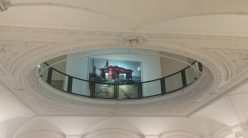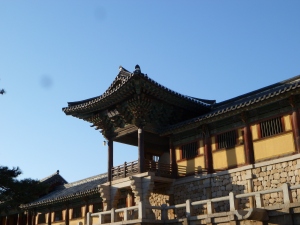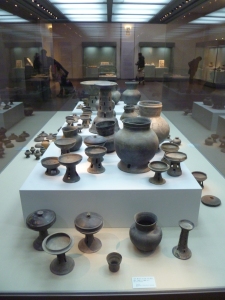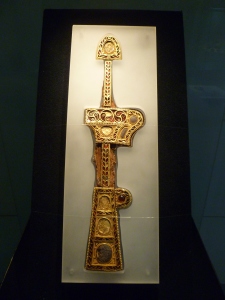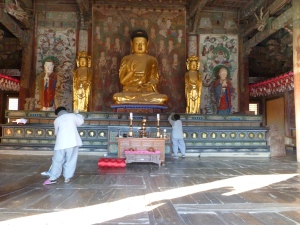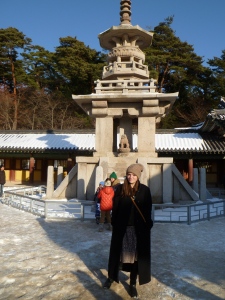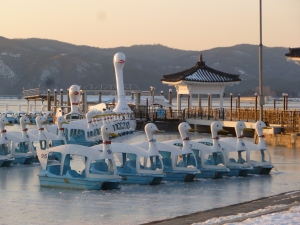After a couple months of being in South Korea, I finally made it out to Gyeongju. I had planned to go in Fall to see the foliage, but ended up going there during the cold winter. Being up in the hills, it was a bit colder than elsewhere.
Gyeongju was the capital of the Silla dynasty, which ruled Korea from the 7th-9th centuries. Today, it is a small, rather sprawled city packed with various indoor and outdoor historical attractions.
The first stop in Gyeongju was the National Museum. This place is a good way to start a day in this historical city, as it will give you an outline of the different periods that have been excavated, and will show visitors some objects and explanations for the outdoor places they are about to see. The museum is divided into several different houses, and the outdoor part is a courtyard that also contains the oldest-known bell in Korea.
I liked this museum because it was focused and mainly about one thing, rather than being extended all over the place so it is impossible to take everything in. Many of the artifacts in this museum were from the burial tombs of kings, which gives you a good frame for when you go check that out later.
Buddhist art also makes up a big part of this museum, and one building contained an assortment of related statues and paintings.
Another great part of Gyeongju is Bulguksa Temple. Upon arrival, the outer area of it looks somewhat like a giant ship. Inside this temple complex, a few different houses are scattered throughout, each full of grand golden Buddha sculptures, candles and monks tending to their houses of worship.
Some of the artwork was very intricate, as you could look at what appeared to be a single drawing, and then get lost discovering the thousands of different little parts that make it up.
There were also some national images in this park. At this statue, Dabotap, my Korean friend pulled out a 10-won coin and showed me that it was imprinted on the back of it. Otherwise, I would have taken that for granted.
After Bulguksa, we drove down through the hills around a lake, and passed an amusement park with several nice hotels located nearby. Though a historical village, it also had a taste of the present.
I was also happy to find out the duck boats had made it to the lake in Gyeongju.
Part of the reason I enjoy traveling is the ability to learn about history and its relation to today. Even though none of this history is my own, and a town like this has nothing to do with my own ancestors, it is still an interesting component of my understanding of living in Korea and interacting with people, even in current times. Being from a country less than 250 years old, I find it fascinating to be able to step out and examine aspects of cultures that range back for thousands of years. Though the town today may contain the carefully-placed remnants of this ancient civilization sectioned into fenced parks and institutions, it is still powerful that this much has been carried through the years.
